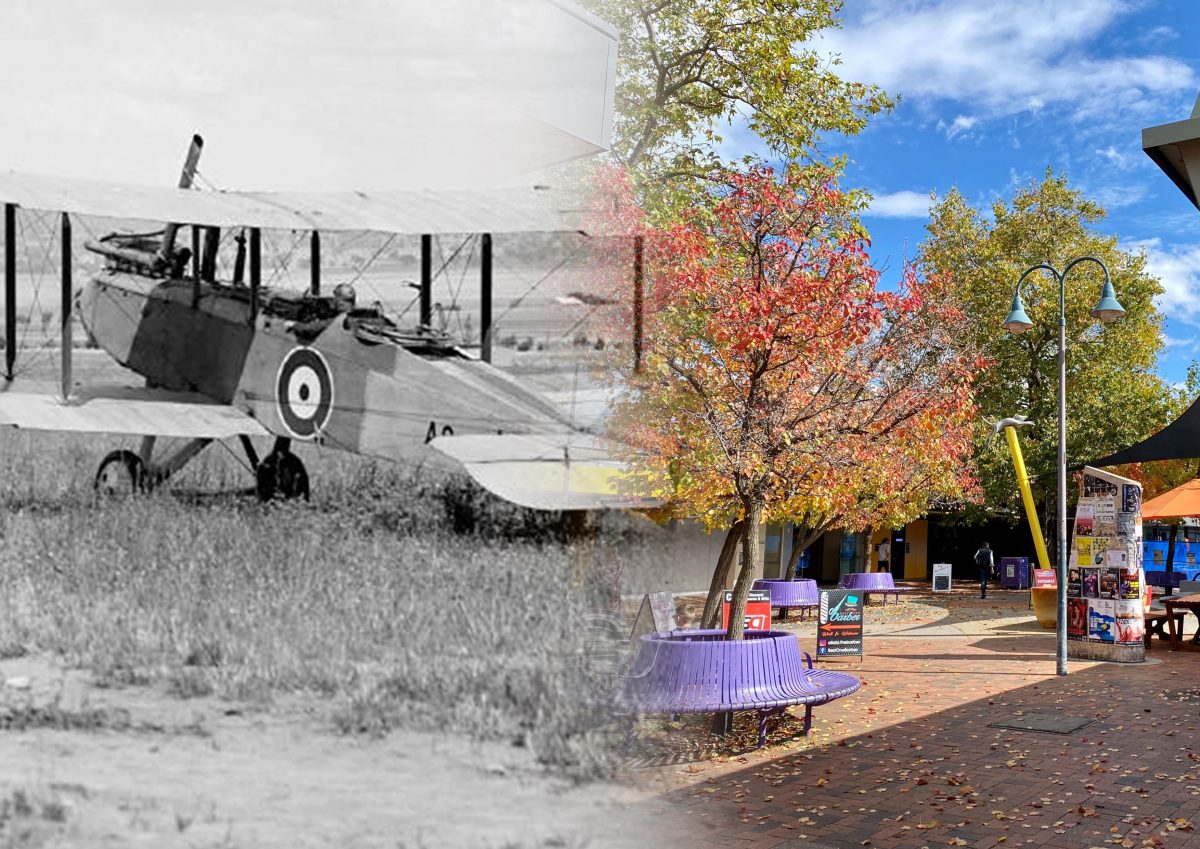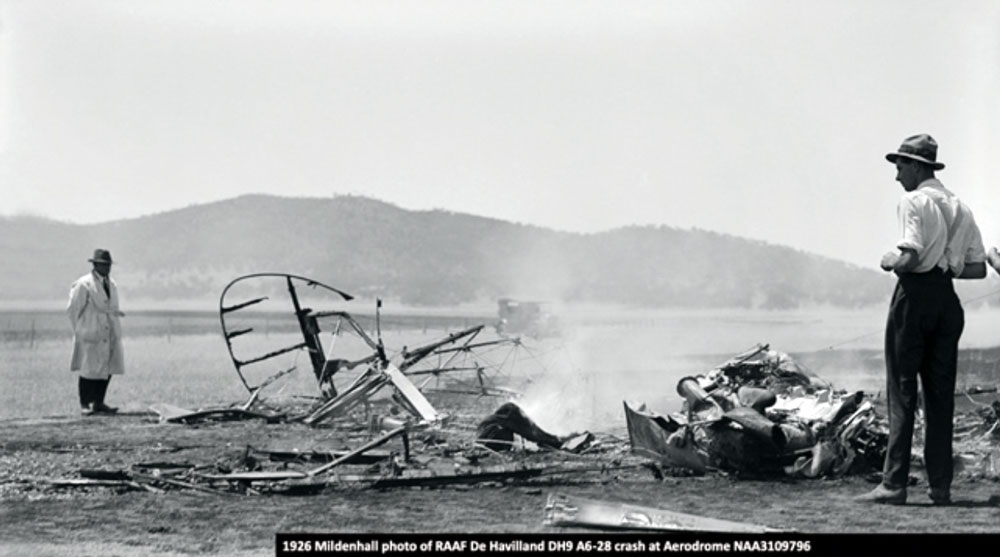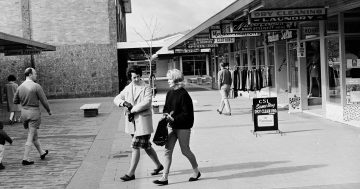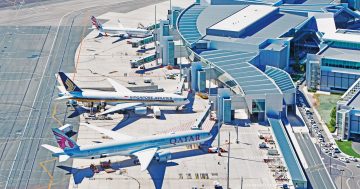
Dickson Now and Then. Photo: National Archives, James Coleman.
Dickson might be an average looking urban landscape today, home to a shopping centre, library and wetlands area. But go back to the early 20th century and it was home to the national capital’s first airport.
A simple plaque by the front door of the Dickson Library commemorates the ‘Dickson Aerodrome’, which opened on 4 March, 1924.
Canberra’s architect Walter Burley Griffin first pencilled in the sheep paddock between today’s Majura Avenue and Antill Street for use as an airfield.
Following pressure from the Defence Force, the Commonwealth Government revisited the plans in the early 1920s. The first plane landed in 1923, bearing government officials tasked with settling on a site.
Air-force pilots went on to use the aerodrome for photography surveys of the area in their flimsy WWI-era biplanes, until 1926 when air operations moved to the current site of the Canberra Airport in the Majura Valley.
But on 11 February of that year, it also became the site of the region’s first air fatality.
A graduate of the Duntroon Military College, Philip Mackenzie Pitt, and his photographer William Callander were coming in for landing after a survey of the Murrumbidgee River.
Observers later recalled the engine appeared to be running normally, but at 100 feet above ground, the DH9 plane suddenly stalled, spun and nose-dived into the ground where it burst into flames.

Dickson Aerodrome plane crash. Photo: National Archives of Australia.
Local ploughman Walter Johnson was working nearby and immediately ran to the blazing wreckage and attempted to claw the men out with his bare hands.
It was too late for Pitt, who was killed instantly. And by the time Canberra Fire Brigade arrived and drowned the fire, Callander was too injured and died soon afterwards in hospital.
Pitt was buried in an unmarked grave in Queanbeyan, and Callander – with his name misspelt –at St John’s in Reid. Johnson was awarded a national bravery award for his service.
Later that year, the aerodrome was closed because the Duke of York was coming for the opening of Parliament House and Dickson was tricky to approach from some angles due to Mount Ainslie.
It reverted to a sheep paddock and eventually housing as suburban Canberra expanded.
But the stories are still kept alive by the convenor of the Dickson Residents Group, Jane Goffman, who ran a tour of the area on 25 April as part of this year’s Canberra and Region Heritage Festival.
She also approached the ACT Heritage Council in 2020 with hopes for the area to be heritage listed, but this was knocked back following an investigation which found it “unlikely … any fragmentary remnants would meet the thresholds for inclusion in the ACT Heritage Register”.
Historians still believe fragments of the crashed plane might be buried under Blacket Street in Downer. One of four concrete ‘lockspits’ that marked the corners of the airfield is visible in the wetlands near Dutton Street.
CORRECTION: This article originally stated that the accident that killed Philip Mackenzie Pitt and William Callander occurred on 26 February 1926. This is incorrect. The accident was on 11 February 1926. Region apologises for this error.













